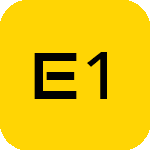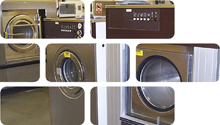E1 WEEE Items

WEEE Items Electrical 16 02 14
The treatment of all end-of-life Waste Electrical and Electronic Equipment (WEEE) items that are in-Scope is governed in England, Wales, Scotland and Northern Ireland by the WEEE Regulations 2013. These reflect the European Commission WEEE Directive. WEEE Items are manufactured from a wide range of materials, components, electronics, fluids and gases in various sizes, condition and quality depending on the desired function, purpose or retail choice. Some WEEE Items contain hazardous components, materials, fluids or gases that need specialist treatment at appropriate and approved facilities. WEEE Items should only be landfilled as a last resort or if required by the WEEE Regulations. This DRIDS is for non-hazardous WEEE Items only; a separate DRIDS covers WEEE Items that contain hazardous components, materials, fluids or gases.
Usage & Probable Locations
There are hundreds of thousands of different types of WEEE Items, categorised in the WEE Regulations as: large/small household appliances, IT/Telecommunications equipment, consumer equipment and photovoltaic panels, lighting equipment, electrical and electronic tools, toys/leisure/sports equipment, medical devices, monitoring/control instruments and automatic dispensers. Collectively they are used for a wide range of electrical and electronic functions within or outside buildings, structures and infrastructure. They can be found in all areas of a building either free-standing or integrated with other building components and elements including ceilings, walls, floors, corridors, roofs, as architectural features and for external display/lighting. See WEEE Schedule 2 in Further Reading for an indicative list of types of EEE which fall under the ten categories.
Personal Protective Equipment
PPE requirements indicated are for guidance purposes only. DRIDS has identified the PPE that is mandatory on all demolition projects and ones that may be required subject to site specific Risk Assessment & Method Statement (RAMS). Hover over the icon to determine the types of PPE required for the removal of this material.
Removal, Segregation & Storage
WEEE Items that are destined for reuse or recycling (including reconditioning and remanufacturing) should be deconstructed, segregated and stored carefully and safely in a dry location inside a building or under cover before transfer with the appropriate paperwork. They should only be transferred to an appropriate and approved/authorised treatment facility or approved exporter that uses Best Available Treatment Recovery and Recycling Techniques (BATRRT). These may include shredding technologies or either manual or automated disassembly processes that follow good or best practice. All hazardous materials, components, fluids or gases should be removed and properly treated according to Government Guidance, Legislation and Regulation.
Tools
Fixtures, Fittings & Connections
Many WEEE Items are free-standing and may or may not be fixed in place or require fittings. Most will be connected to a power supply of sorts including AC, DC and batteries. Some WEEE Items are fixed in place using pin and socket connections, clips or fastenings to provide security within a frame or to other building products. Most tubes, bulbs and lights are contained within a light fitting or box that transmits light through a transparent or translucent screen. Where required, WEEE Items will be fixed in place using a wide range of fixtures and fittings such as bolts, screws, pins, expansion bolts, adhesives or grouts. Some may have the facility to be moved on wheels or rollers.
Health & Safety
Subject to task-specific Risk Assessment & Method Statement (RAMS). Turn off electricity circuit before unplugging or removing items. Use correct protective equipment when working with WEEE Items to prevent irritation, ingestion, splashes, cuts and abrasion. Use eye protection when using hand tools. Wash hands before eating or drinking. Be alert to hazardous materials, components, fluids and gases and their correct symbols in order to recognise and treat them accordingly. Be aware of dermatitis and use correct personal protection and treatment if exposed. Wear kevlar grip gloves when handling glass, glazed items, lenses, bulbs and tubes to prevent drops, cuts or abrasion. Use eye protection when moving above-head items to prevent injury from dust or other particles that may have accumulated over time. Avoid breaking glass, bulbs and tubes. Use appropriate access equipment determined by RAMS.










